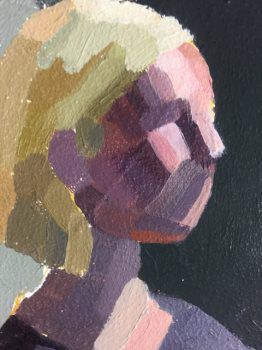In classical painting ateliers, it is taught that “color is not natural; color must be learned”. In Personal Color Analysis the idea that seeing color is an organic event still prevails; either ya got it or ya don’t. This is a holdover from the aftermath of the Modern Art movement of the last 100 years: the modernist propaganda that “skilled craftsmanship is old hat” squashed skill-based education for the visual arts, including training in color theory, and so it became a thing of the past for the last 100 years.
When Personal Color Analysis was birthed during the mid part of the last century, as in all the visual arts, it suffered from the effects of the modernist idea that color skills were a magical talent; only a few people possessed the ability to see color well. In truth, some people do have 100% visual color accuracy. If you’re one of them, you could be a color analyst for Pantone! But this article is not for you…
I’m writing for the rest of us mere mortals who must learn color; and, it takes time! It requires lots of painting, pigment studies, and color matching exercises to accurately “see” the color of the light on skin. There are two main reasons why the brain must be trained to see color: 1. The elusive, translucent quality of the skin (even in the case of opaque skin types) is a complex visual experience and, 2. The distortions caused by the symbolism ever-present in the optical part of our brains must be refined through skill-based training before we can “see” the visual world accurately.
The learned ability to “see” the “color of light” requires repetition and lots of practice. Here is an example of a preparatory exercise we use in painting to begin to see the true color of light on the skin before painting an actual portrait.

Color Study For A Spring
This pigment study is a standard precursor, even for very seasoned artists, to prepare optically when executing a painted portrait. Although Personal Color Analysis isn’t as complex as a painted portrait I find that slowing down my process so that I can visually adapt to the color of light I “think” I’m seeing on my client’s skin, ultimately results in a more accurate personal color analysis.


Comments 2
Hey there, thought you might want to fix a typo. Under Seeing Color Is Not Natural; It Is Learned – Change moderist to modernist the second time it is used in the first paragraph. Enjoyed your website and work, wish I could see you in person to do my color profile. Best to you. Hope
Hello Hope,
Thanks for your interest and careful attention! I will certainly fix that. And we can do a great color profile remotely in these dog days of Zoom if you like.
Stay well,
Pati